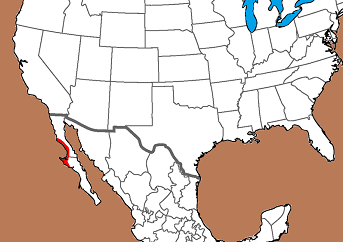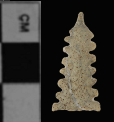

Size Measurements: Data Needed
This point is primarily found on the coastal islands and costal regions of Baja California, Mexico.

HUAMALGÜEÑO (Lanceolate) – is Spanish meaning dwellers of the island of fog. Matthew R. Des Lauriers defined the Huamalgüeño point type for examples recovered from site (PAIC-36) on Isla Cedros off Baja California (also known as Huamalgua Island by the Cochimí Indians). The type consists of carefully flaked, medium-sized (2.50” to 3.50”) narrow, triangular points with multiple, deep serrations. They are produced from both local and nonlocal materials. Des Lauriers reported that the points were clearly associated with the Late Prehistoric period and up until the contact period. Reference: Des Lauriers, Matthew R. 2005, Rediscovering Huamalgua, the Island of Fogs: Archaeological and Ethnhistorical Investigations of Isla Cedros, Baja California. Unpublished Ph.D. dissertation, Department of Anthropology, University of California, Riverside.



Des Lauriers is a distinguished anthropologist and professor of Anthropology at California State University. He has conducted extensive studies into the archaology of southern California and Baja California. This type was defined in his Ph.D dessertation and has several professional references. This is considered a valid type.
.